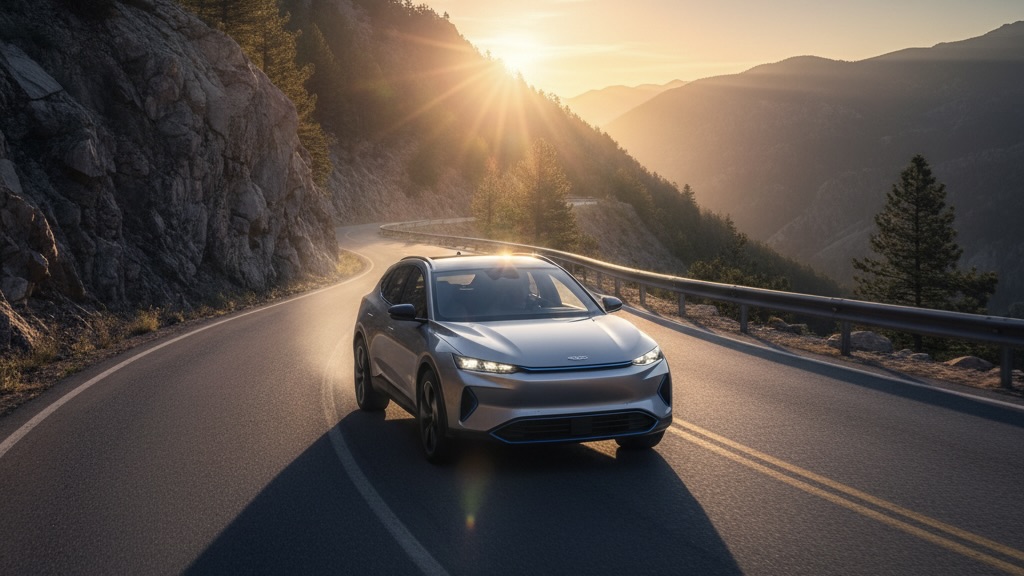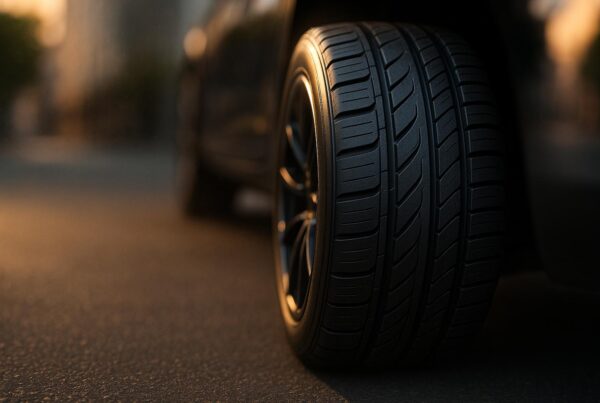Hybrid cars are increasingly attracting the attention of automotive consumers in Indonesia. A hybrid car combines a gasoline engine with an electric motor, thereby offering a balance between fuel efficiency, performance, and environmental care. This technology enables vehicles to operate with lower gasoline consumption while also reducing carbon emissions.
The main advantage of a hybrid car is its efficiency. In heavy traffic conditions, the electric motor is able to take over the function of the gasoline engine. In addition, the regenerative braking system keeps the battery charged automatically. This makes hybrid cars the best transitional solution before the full adoption of electric vehicles, especially in a country like Indonesia where the EV charging infrastructure is still limited.
Hybrid Car Range in Indonesia
A popular hybrid car such as the Toyota Corolla Cross Hybrid has become a real example of high efficiency. With a 36-liter fuel tank, this car is able to travel about 800 to 900 kilometers on a full tank. Average fuel consumption reaches 23–25 km per liter, depending on driving style and road conditions.
Hybrid Car for Long-Distance Travel
With that distance, the Jakarta–Surabaya trip (about 780 km) can be completed with only one full tank of gas. Even shorter trips, such as Jakarta–Cirebon (220 km) or Jakarta–Semarang (450 km), still leave quite a lot of fuel after arriving at the destination. Consumers also do not need to worry about finding a gas station in the middle of their journey.
Fuel Efficiency and the Environment
Another advantage of a hybrid car is its low exhaust emissions. With a system that combines a gasoline engine and an electric motor, this vehicle produces less pollution than conventional cars. For urban communities facing high air pollution, the presence of hybrid cars can be an environmentally friendly alternative that remains practical.
Types of Hybrid Engines
Hybrid technology comes in a variety of types. Each one offers advantages and disadvantages according to consumer needs.
Mild Hybrid in the Indonesian Market
A mild-hybrid uses the electric motor only to assist the gasoline or diesel engine. This system does not allow cars to run on pure electricity. An example of its application can be found in the Suzuki Ertiga Hybrid. This technology is suitable for users who want to experience a little extra efficiency without it being too expensive.
Full Hybrid for Flexibility
Full Hybrid is more flexible. A car can run on gasoline, on electricity, or a combination of the two. This system is used in the Toyota Prius and the Toyota Corolla Cross Hybrid. The transition from electric to gasoline runs smoothly, making the driving experience more comfortable.
Plug-in Hybrid (PHEV)
Plug-in hybrids or PHEVs have larger batteries that can be recharged from home or an electric charging station. The all-electric range is longer than that of a standard hybrid. The Mitsubishi Outlander PHEV and the Toyota RAV4 PHEV are examples of cars with this technology.
How the Hybrid Car System Works
Although it sounds complicated, the hybrid system actually works quite simply.
Low-speed condition
When the car is moving at low speed or in congested traffic, the electric motor takes over. The gasoline engine is not working, so the fuel is more economical.
Acceleration and High Speed
When the driver needs more power, the gasoline engine and the electric motor work together. However, at high constant speed, the gasoline engine is more dominant with the electric motor providing assistance as needed.
Energy regeneration
During deceleration or braking, energy from the wheels is converted into electricity and used to charge the battery. This system is known as regenerative braking, which is one of the key factors in the efficiency of hybrid cars.
Toyota Corolla Cross Hybrid specifications
The Toyota Corolla Cross Hybrid sold in Indonesia uses a Hybrid Electric Vehicle (HEV) system.
- gasoline engine: 1.8 liter, power 98 PS, torque 142 Nm.
- electric motor: power 71 hp, torque 163 Nm.
- Total hybrid systemCombined power is around 122 PS.
- BatteryNickel-Metal Hydride (Ni-MH).
- Transmission: e-CVT.
This combination delivers fairly robust performance, high efficiency, and driving comfort.
Advantages of Hybrid Cars
Hybrid cars have a number of advantages that make them attractive in the Indonesian automotive market.
Fuel efficiency
Gasoline consumption is much more economical because the electric motor often takes over. This is very noticeable in dense city traffic.
No-hassle charging
Unlike EVs, hybrid cars do not need to be charged from an external power source. The battery is automatically charged via the engine and the regenerative braking system.
Environmentally Friendly
Carbon emissions are lower than those of conventional cars. Hybrid cars are suitable for use in large cities with poor air quality.
Comfortable and smooth
The transfer of power from the electric motor to the gasoline engine occurs with almost no vibration. The acceleration also feels smoother and more comfortable.
Comparison with Conventional Cars and EVs
The choice between gasoline cars, hybrids, and fully electric vehicles is heavily influenced by consumer needs.
Gasoline car
The initial price is cheaper, but it is fuel-inefficient and produces high emissions. Suitable for those with a limited budget.
Hybrid car
Offering the best balance. Fuel-efficient, environmentally friendly, and you don't have to worry about charging.
Electric Car (EV)
The most environmentally friendly, with very low operating costs. However, the high upfront price and the charging infrastructure in Indonesia are still limited.
Consumer Considerations in Choosing
Consumers usually consider several factors before buying a vehicle.
- Initial budget vs long-term costs: Gasoline cars are cheap upfront, hybrids are more economical in daily use, EVs are more efficient in the long term.
- Travel needs: Hybrid is more suitable for long-distance trips, EV is just right for use in the city.
- Infrastructure access: In areas where gas stations are easily accessible, hybrids are more practical than EVs.
- Environmental awareness: Young urban consumers prefer hybrids or EVs to help reduce pollution.
Hybrid cars have now become the most balanced choice for Indonesian society. With high efficiency, driving comfort, and environmental awareness, this technology serves as a transitional solution before pure electric vehicles truly become dominant. For readers who want to deepen their knowledge of automotive information and environmentally friendly transportation technology, check out other related articles atInseminationandOlam News.
Discover more from Insimen
Subscribe to get the latest posts sent to your email.










